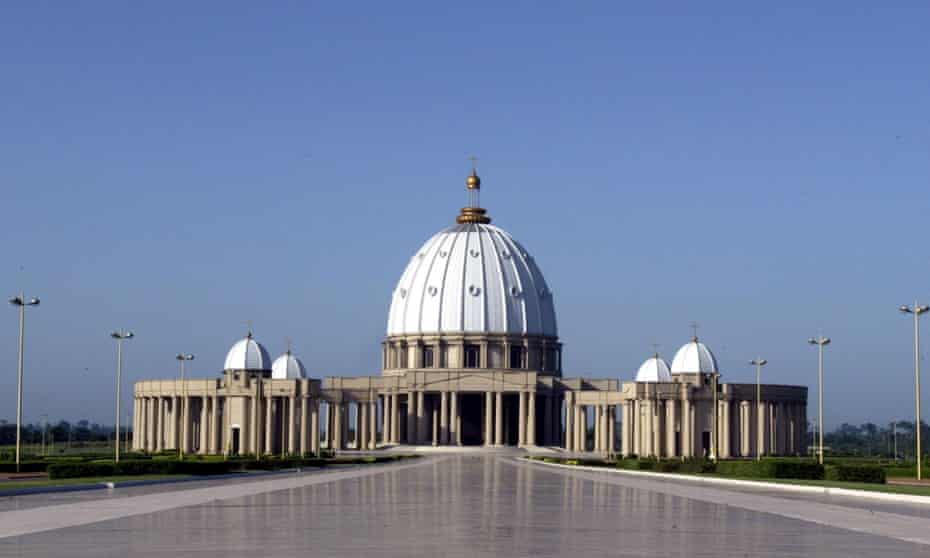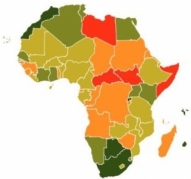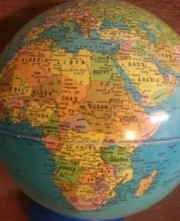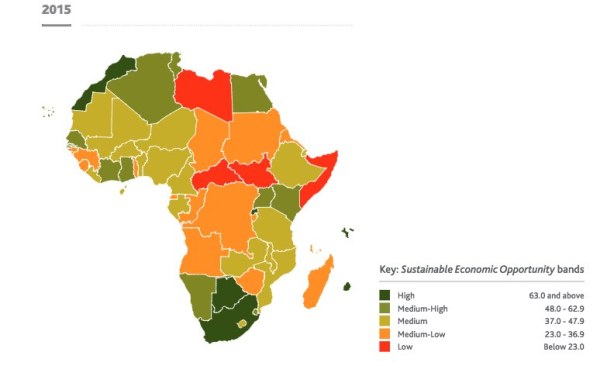Here’s the thing: being a dictator is hard. Being an African despot is even harder – you have to keep the people wowed and scared of you at the same time. All that responsibility, every minute of every day, even while you sleep.
Killing people pretty much does the job, but you can’t kill everyone can you? Some you kill, others you wow with your grandiosity. Others you hang from trees so the a boxing bout is without pickpockets, and because you know a good gig requires a dose of insanity.
#7 Kamuzu’s Kamuzu Academy

Kamuzu Academy
www.kamuzuacademy.com
Malawi’s President for Life, Dr. Hastings Kamuzu Banda is known for many eccentricities, the biggest of them being racist towards his own people. He was so out of touch when he became president that he had forgotten his mother tongue, Chichewa, and had to speak through an interpreter. Any African will tell you that it is an unforgivable crime to forget your tongue.
He had spent most of his time outside Malawi in England, and had picked up more than just an accent. He had picked up the overly ambitious idea of a college so prestigious it would churn out the Malawi’s elite like a Chinese mass manufacturing factory. That idea became the Kamuzu Academy. Dubbed as the Eton of Africa and apparently a direct replica of Eton, the institution was opened in 1981 to give the poorest childen in Malawi a chance to get a proper education. Three students, two boys and one girl, would be picked on merit from each district to join this grammar school modeled on Eton, the best in the English board school tradition. It was so prim that the head of Eton itself said that Eton should be renamed ‘England’s Kamuzu.’
 Am I the only one who thinks the hats were too much?
Am I the only one who thinks the hats were too much?
www.thinkafricapress.org

At Kamuzu Academy, the students would learn among other things Latin and Ancient Greek. All the teachers were expatriates, and students would be punished if they were caught speaking in Chichewa, the local tongue. Learning dead languages was apparently more important than learning African ones.
 Banda and the expatriate staff of Kamuzu Academy
Banda and the expatriate staff of Kamuzu Academy
www.read2live.com
It is rumored, although it has never been proven, that Banda spent a large portion of Malawi’s education budget on Kamuzu College. The government funded everything, even the building of an artificial lake for water supply and a nine-hole golf course. Unlike most projects by dictators, Kamuzu College survived the loss of its patron, who was deposed in 1994, presumably with a more sensible business model and less lofty goals.
#6 Wade’s African Rennaisance Monument
 The African Renaissance Monument
The African Renaissance Monument
www.theguardian.com
Senegal’s former president Abdoulaye Wade’s pet project was a statue higher than the Statue of Liberty. He often compared it to the Eiffel Tower and, like Equatorial Guinea’s Obiang Nguema, micromanaged its construction. The controversial statue, meant to represent the rebirth of Africa, depicts three figures emerging from a volcano, a muscular man holding a woman behind him, and carrying a child aloft pointing out to sea. The woman is scantily dressed while the man is depicted as being in control. Standing at 49 meters (160ft), the African Renaissance Monument cost a reported US$27 million. Wade, ever the optimist, figured he deserved 35 percent of the revenue generated from the statue because he was its intellectual creator.

Pay the poets! Pay the creatives! Pay the overbearing, wasteful, over-ambitious despots too?
www.bbc.co.uk
For a statue that was meant to inspire an African renaissance for freedom from oppression, it is perhaps ironic that it was built by North Korean workers and is clearly plagiarized from Soviet statues. Still, Wade managed to sell the idea, attracting 19 African heads of state and 100 prominent African-Americans including Rev. Jesse Jackson to the inauguration during the Jubilee celebrations in Dakar.
It was seen by most as a vanity project by Wade, with the male face being said to have been crafted to resemble him.At one rally, a protester expressed the discontent quite succinctly saying it symbolized all the failures of Wade’s regime, the least of which is this horrible statue”.. Another said of Wades allusion to the Eiffel Tower, But the French had first sorted out their food before they built the Eiffel Tower.”
 Wade hadn’t even bothered with the garbage
Wade hadn’t even bothered with the garbage
www.npr.org
Today, however, the white elephant wastes around $10,000 to $20,000 per month. According to a famed Senegalese sculptor, Ousmane Sow, the monument is excessively tall, poorly constructed and built on an unstable foundation. That pretty much sums up the African renaissance, if there ever was one, doesn’t it?
#5 Gaddafi’s Sirte
While most despots dream of only making their home villages the capital cities of the country, Gadaffi wanted to make Sirte the capital city of Africa. For a while, it looked like he had succeeded.
 Well, until this happened.
Well, until this happened.
www.stopwarcrimes.wordpress.com
After he seized power in 1969, he embarked on an ambitious series of projects to turn the seaside village into a small city. Although Tripoli remained the formal capital city of Libya, the Libyan parliament and most government departments moved to Sirte in 1988 or shortly after. In 1991, the Al-Tahadi University was established. He also built the grandiose Ouagadougou Conference Center with its outsized halls and a huge pink walled edifice. It was here that he held meetings with other African leaders to establish the African Union, successor of the OAU, a regional body that would go on to hold many meetings there, facilitated by an overbearing patron who saw himself as its head.

www.africa-union.org
Bringing down Ouagadougou was as important as capturing and killing Gadaffi. Its psychological impact was to show that the despot was no more, and his dreams of a united Africa would have to find a new home. He embarked on many other ambitious projects in Libya, one of them being the Great Man Made River often described as the eighth wonder of the world. The $30 billion project was fully funded by the government without international assistance, as water in Gaddafi’s Libya was considered a human right.
#4 Teodoro Obiang, Ongoing Project
 The Oyala Memorial Building
The Oyala Memorial Building
www.france-guineeequatoriale.org
If we ignore Teodoro Obiang’s playboy son, Teodorin Nguema, a presidential grandiose white elephant project in his own right, Obiangs most expensive project would be his new capital city for Equatorial Guinea.
Obiang’s big idea is to create a new multi-billion dollar capital city smack in the middle of Equatorial Guinea’s rainforests. His logic is that his current capital city is open to sea front attack and that Oyala,the proposed new capital, would provide better security for his presumably lifelong dictatorship and political dynasty.
There is a six-lane highway to Oyala dubbed the Avenue of Justice because irony. The city was designed by IDF (Portuguese acronym for Ideas of the Future) and covers over 8150 hectares. It will house 200, 000 people in both the residential, government, and commercial areas.

www.bbc.co.uk
Dictators and monarchs moving capital cities for security reasons is not a new thing: Islamabad took over from Karachi and Abuja from Lagos.
Dictators also tend to get overly involved in their pet projects but Obiang’s micro-managing is on a different level. Every once in a while he visits Oyala and orders the demolition and rebuilding of buildings he does not like. This delays construction and pisses off a lot of people who cannot say a thing because death.
#3 Felix Houphouet-Boigny’s Vatican
www.wikipedia.org
The first President of Ivory Coast, Felix Houphouet-Boigny didn’t think it was enough to have an awesome name, immense power, and a direct hand in the cocoa exports chocolate jar. He had a bigger idea, to transform his home village of Yamoussoukro into the host of a basilica bigger than St. Peters in the Vatican.
Like any good despot, he sought to move everything to his home village. He wrapped it up in the almost-book-title ambitious Great Lesson of Yamoussoukro in 1965. This would be the fourth movement of the country’s capital city in under a century. Boigny went all out on the eight-lane boulevards, schools, a golf course, hotels, an airport and a university. The airport was the only one of two in Africa at the time that could take a Concorde, and both were built by despots.
So, how could anything stand out in this overly ambitious project?
 How about the largest church in the world?
How about the largest church in the world?
Officially known as the Basilica of Our Lady of Peace of Yamoussoukro is the largest church in the world, built over 88 acres and cost a whopping $300 million.The Basilica was constructed between 1985 and 1989 in the design of a dome like the St. Peters, but not as a direct replica. It is shouldered by 272 Greco-Roman columns, has Italian marble tiles on 7.4 acres and is surrounded by an expansive swathe of 88 acres of nothing but formal gardens. The 7,000 square meters of stained glass was imported from France. The air conditioned basilica was designed with a seating capacity of 7, 000 and standing room for 11, 000.
There is a private papal villa that has only been used once, in 1990 when Pope John Paul II came to consecrate it.
When the Vatican learnt the dictators big plan to out-do the Vatican, it demanded that that the dome of Yamoussoukro Basilica not be higher than St Peter’s. To save face, the Vatican also demanded that a hospital for the poor be built near the new church.
Houphouet-Boigny agreed not to make it taller than St. Peters in Rome because he wanted the Pope at the consecration. But he did a few cheeky things, the cross of his Basillica is suspiciously 17m higher. On one stained glass panel Boigny is pictured beside Jesus in one stained glass panel. He had appointed himself the 13th Apostle.
 Even weirder, the Basilica is not even a cathedral.
Even weirder, the Basilica is not even a cathedral.
The nearby smaller and more practical Cathedral of Saint Augustine is the seat of the bishop.Although the giant replica of the Vatican was built with a seating space of 17, 000, fewer than 10 percent of the 120, 000 people who made up the city’s population were Catholics. Today, only a few hundred meet within the church. Even his funeral memorial ceremony only attracted 7, 000 sitting guests, a number that has not been achieved since. Perhaps Boigny should have invested more in conversion.
#2 Colonel Jean-Bedel Bokassa becomes Emperor
www.a24media.com
In what seems to have been open season for coups in Africa, Bokassa became ruler of Central African Republic after overthrowing his cousin David Dacko in 1966. In 1976, he ended the CAR and started an empire, the Central African Empire, declaring himself Emperor Bokassa I of Central Africa. As if that was not boisterous enough, he organized one of the most lavish and ridiculous coronation ceremonies ever.
Bokassa plagiarized heavily from the coronation of Napoleon I, who converted the French Revolutionary Republic of which he was First Consul into the First French Empire. Emperor Bokassa I, however, forgot that the French had already had been a monarchy for centuries before, and had enough in its coffers to make the coronation a cost-effective affair. Instead, he went all out; he had a mile-long cape, a giant eagle-shaped solid-gold throne, and a crown decked with emeralds, rubies, and 8000 diamonds. He imported 240 tons of French cuisine, dressed 3000 guards in lavish uniforms after sending some of them to France to learn riding skills. The horses, carriages, robes, champagne, caviar, thrones, court musicians, almost everything else were all imported from Europe.
 The mile-long cape
The mile-long cape
www.royalcello.websitetoolbox.com
Only a measly 600 of the expected 2500 visited. Bokassa commented on this rather disappointing turn-out:“They were jealous of me because I had an empire and they didn’t.” Of course they were, who wouldn’t be jealous of “His Imperial Majesty Bokassa I, Emperor?of Central Africa by the will of the Central African people, united within the national political party, the MESAN.“
The coronation took a whole year to plan and gobbled up over $20 million, the equivalent of US$ 83 million in 2014, the country’s entire Gross Domestic Product.
#1 Mobutu’s Rumble in the Jungle

www.newshistories.group.shef.ac.uk
Early on the morning of October 30, 1974, at the 20th May Stadium in Kinshasa, Zaire, 60, 000 spectators chanted “Ali boma ye!” It was a euphoric chant meaning “Ali, kill him!” The bout was dubbed Rumble in the Jungle.
It was Africa’s first heavyweight bout, featuring Muhammad Ali, the former heavyweight champion, and undefeated world heavyweight champion George Foreman. Ali thumped Foreman to a pulp in eight gruelling rounds. That is the boring part of the story.

The demolition.
Image Source www.anorak.co.uk
It was the boisterous project of Mobutu Sese Seko, in a bid to boost his PR among African-Americans. At home, he had already transformed his home town of Gbadolite into the Versailles of the Jungle. The Moanda airport in Gbadolite was the second of the only two airports in Africa that could accommodate the Concorde. He had also built the biggest nuclear bunker in Africa and the only one in Central Africa. With absolute power and immense wealth, Mobutu aimed higher.
Eager to strike it big, promoter Don King made the boxers sign contracts that they would fight if he could get a $5 millon purse. He then went around looking for sponsors until he encountered Mobutu Sese Seko, the dictator of Zaire (now DRC) at the time. Mobutu put up $10 million to be divided equally between the two boxers just for showing up, but demanded that it had to be held in the Central African nation. Don agreed, and in the months leading to September 1974, the world moved to Zaire.
Behind the scenes, however, the bout was Mobutu’s Public Relations campaign to win legitimacy among African-Americans.
He was particularly eager to win over African-Americans who disapproved of his CIA-backed coup of the immensely popular Patrice Lumumba. Lumumba was an icon for prominent African-Americans such as Malcolm X who idolized and quoted him repeatedly.
Don King had originally named the bout “From the Slave Ship to the Championship”?but Mobutu demanded it be named something else, finally agreeing to the catchier rhyme for a title.
The fight was originally slated for September, and the boxers and hordes of legendary journalists such as Hunter S. Thompson thronged to Kinshasa. Zaire 74, a music extravaganza to promote African and African-American music, was held a few days before D-Day. A few days before the slated date, however, Foreman’s sparring partner caught him above the eye with an elbow and wounded him, preempting what became five weeks of debauchery as everyone waited for the world champion to heal. Ali, the aging former champion, used that time to play mind games and win over the Congolese people.

www.lens.blogs.nytimes.com
Other than the money, which exceeded the $10 million he paid to the boxers, Mobutu went all out. One rumor has it that he summarily executed criminals in Kinshasa by hanging them from trees in the main square to reduce insecurity during the duration of the bout.
In the movie When We Were Kings, Norman Mailer says that Mobutu had secret detention cells right under the stadium?and it is almost certain the torture continued?during the fight. About the ethics of accepting money from a despotic mass murderer for PR, Ali was quoted as saying Some countries go to war to get their names out there, and wars cost a lot more than $10 million.
Ironically, for a man who had invested so much and almost certainly killed hundreds of criminals to make Kinshasa safer for visitors, Mobutu did not attend the fight. Instead, he watched it on TV in his palace, fearing his enemies would take advantage of the crowd to assassinate him.






